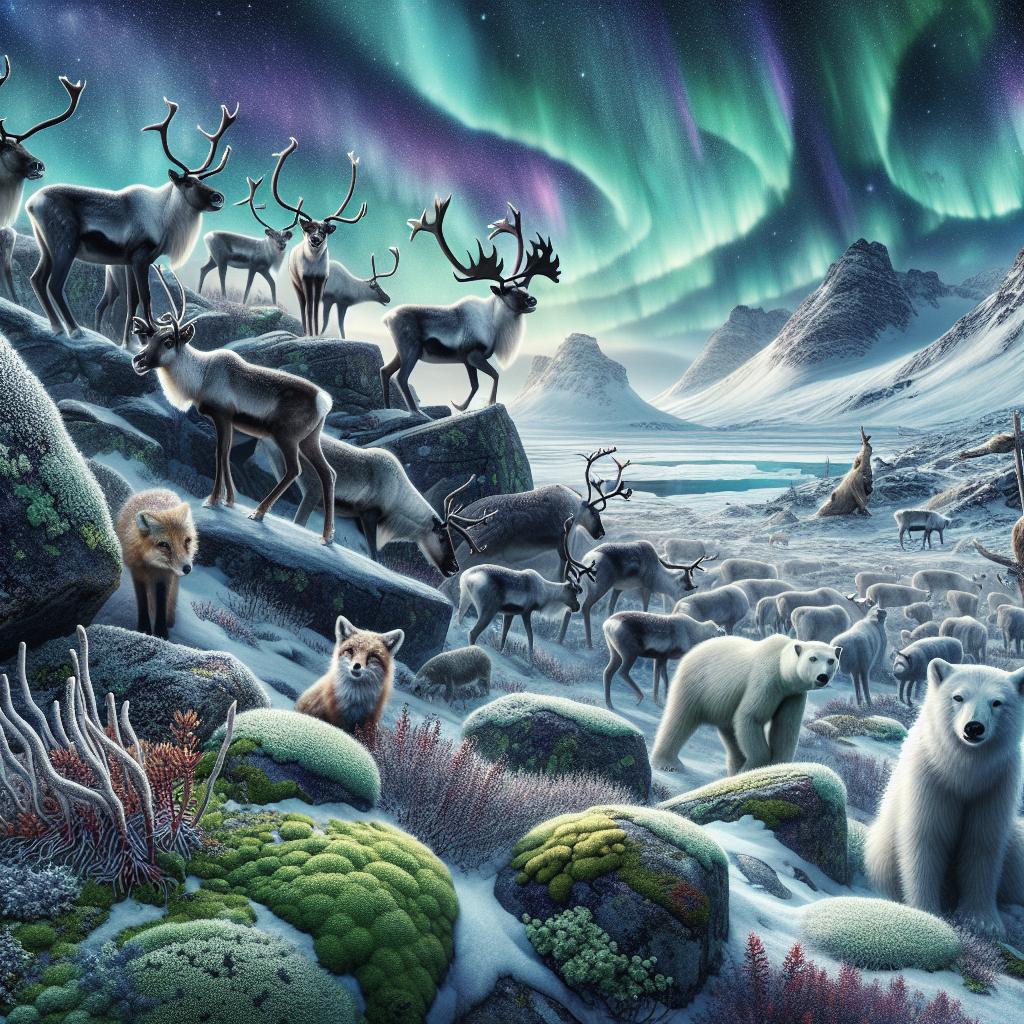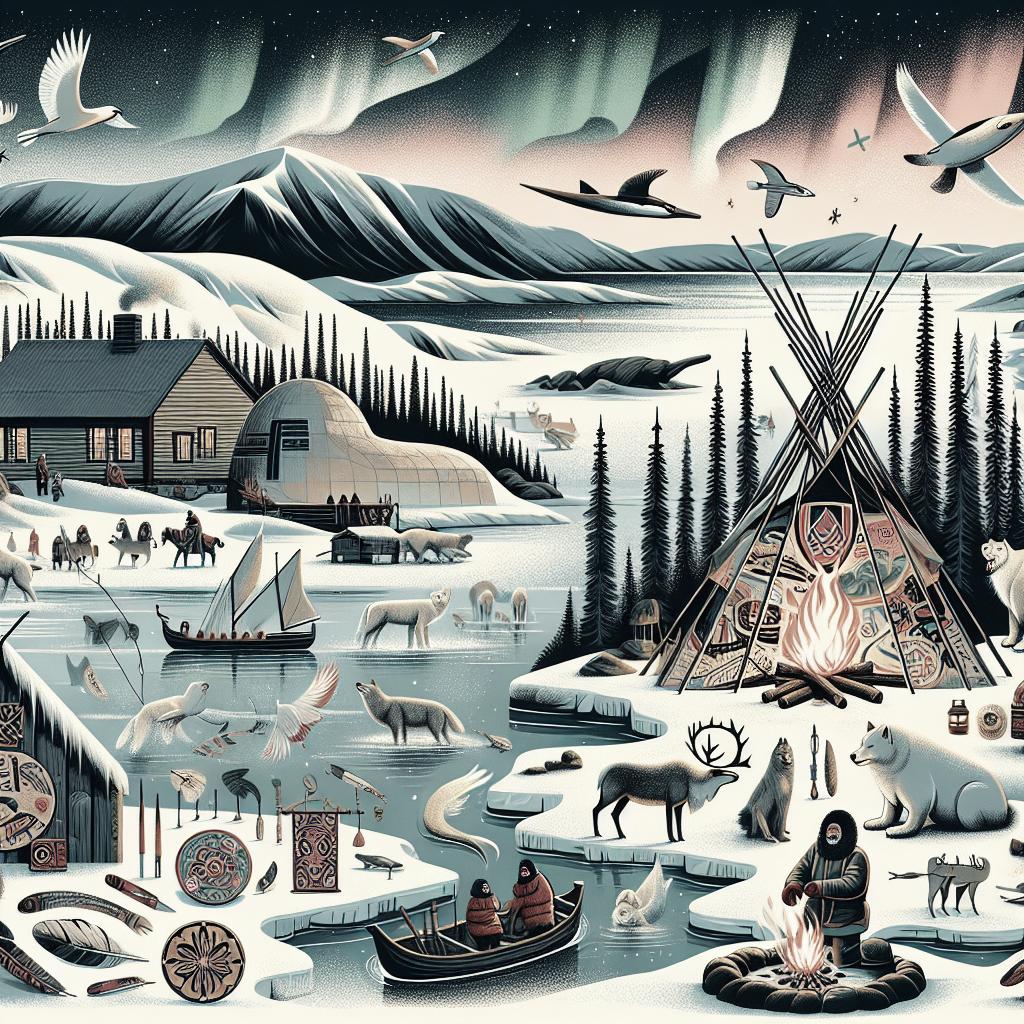“`html
Understanding Northern Ecosystems
Northern ecosystems represent some of the most diverse and unique environments on our planet. Colonized by remarkable species like seabirds and ringed seals, these ecosystems host intricate food webs and reveal fascinating adaptation strategies to extreme conditions. This blog post delves into the key aspects and species of northern ecosystems, focusing on their ecological significance, habits, and how their survival intricately ties with the changing environmental circumstances. By exploring the lives and interactions of seabirds and ringed seals, and the collaborative efforts in their conservation, we aim to gain insightful lessons into sustaining biodiversity in these frigid regions.
Document navigation
Seabirds
Seabirds are an integral component of northern ecosystems, acting as critical players in maintaining ecological balance. Adapted to live in harsh climates, species like the Arctic tern and the puffin showcase remarkable migratory patterns and prey-diversifying strategies to thrive. These birds often travel thousands of miles to breed and forage, with the Arctic tern notorious for completing one of the longest migrations known in the animal kingdom, from the Arctic to the Antarctic and back each year. Their existence threads an ecological narrative that spans several biomes, playing a vital role as indicators of ocean health and climate change.
The diet and feeding habits of seabirds have a profound impact on the marine environment. By preying on fish and marine invertebrates, seabirds contribute to controlling the population dynamics of these species. Guano deposition by seabird colonies enriches coastal soils with essential nutrients, promoting plant growth and nurturing terrestrial ecosystems. However, with climate change altering sea temperatures and ice patterns, seabird populations face new challenges. Changes in fish distribution and abundance directly affect seabird breeding success, signaling significant ecosystem shifts.
Ringed Seals
Ringed seals, a hallmark species of the Arctic and sub-Arctic, have adapted to coexist with one of the coldest environments on Earth. Possessing unique physiological and behavioral adaptations, they thrive amidst icy waters where they rely on sea ice for breeding and resting. With a thick blubber layer and the ability to create breathing holes in ice, these seals are adept at surviving polar conditions. Their dependence on sea ice, however, makes them exceptionally vulnerable to global warming, which threatens to diminish their habitat.
The diet of ringed seals primarily consists of fish and crustaceans, which they skillfully hunt beneath the ice. These seals are a key prey species for polar bears and consequently underpin Arctic food webs. The reduction in sea ice diminishes pupping success rates, compromises seal health, and disrupts the cultural practices of indigenous communities that rely on them. Initiatives aimed at conserving ringed seal populations are critical, not just for the seals themselves, but also for maintaining the broader ecological balance in these northern regions.
Working together
Addressing the complex challenges of northern ecosystems requires cooperative and multidisciplinary efforts. Conservationists, scientists, and indigenous communities are pooling their knowledge and resources to safeguard these habitats and their wildlife. Monitoring programs and satellite tagging are implemented to gather data on species movements and population dynamics, essential for developing effective conservation strategies in response to environmental changes.
Local communities living in proximity to northern ecosystems have long maintained traditions and knowledge crucial for sustainable living. Respecting and incorporating indigenous ecological knowledge into modern conservation initiatives can enhance the efficacy and sustainability of these efforts. Through collaborative problem-solving, embracing both technology and traditional practices, the global community can work to ensure the longevity of northern ecosystems and their iconic species.
Lessons Learned
| Ecosystem Component | Key Insight |
|---|---|
| Seabirds | Migrate long distances, act as ecological indicators, affected by climate-related changes in prey distribution. |
| Ringed Seals | Depend on sea ice for survival, vital prey for polar bears, threatened by warming temperatures and habitat loss. |
| Collaborative Efforts | Incorporate scientific and indigenous knowledge, essential for conservation, combine technology and tradition for sustainability. |
“`

